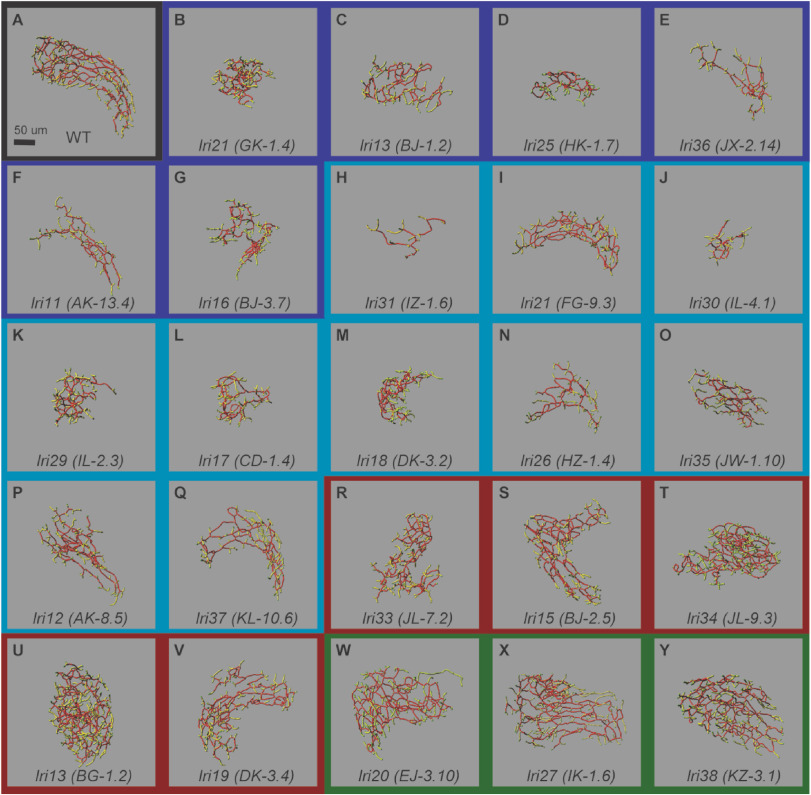Fig. 1 Skeletal representation of the intrahepatic biliary network at 5 dpf in mutants recovered from the forward genetic screen. Skeletal representation of the intrahepatic biliary network in mutant larvae based on Tg(Tp1-MmHbb:EGFP)um14 expression at 5 dpf, unbiasedly classified based on branching sub-parameters of the intrahepatic biliary network. (A) Wild-type control (Black border). (B–G) Class Ia (Dark Blue border): lri24 (GK-1.4) (B), lri14 (BJ-1.2) (C), lri25 (HK-1.7) (D), lri36 (JX-2.14) (E), lri11 (AK-13.4) (F), and lri16 (BJ-3.7) (G) mutants belong to this class. (H–Q) Class Ib (Light Blue border): lri31 (IZ-1.6) (H), lri21 (FG-9.3) (I), lri30 (IL-4.1) (J), lri29 (IL-2.3) (K), lri17 (CD-1.4) (L), lri18 (DK-3.2) (M), lri26 (HZ-1.4) (N), lri35 (JW-1.10) (O), lri12 (AK-8.5) (P), and lri37 (KL-10.6) (Q) mutants belong to this class. (R–V) Class II (Red border): lri33 (JL-7.2) (R), lri15 (BJ-2.5) (S), lri34 (JL-9.3) (T), lri13 (BG-1.2) (U), and lri19 (DK-3.4) (V) mutants belong to this class. (W–Y) Class III (Green border): lri20 (EJ-3.10) (W), lri27 (IK-1.6) (X), and lri38 (KZ-3.1) (Y) mutants belong to this class. Ventral views, anterior to the top. The network features are color-coded: end points (green), nodes (white), node-node connections (red), and node-end point connections (yellow). The representative biliary skeleton for each genotype was selected based on the lowest deviation from the average network structural sub-parameter attributes.
Reprinted from Developmental Biology, 512, Singh, D.J., Tuscano, K.M., Ortega, A.L., Dimri, M., Tae, K., Lee, W., Muslim, M.A., Rivera Paz, I.M., Liu, J.L., Pierce, L.X., McClendon, A., Gibson, I., Livesay, J., Sakaguchi, T.F., Forward genetics combined with unsupervised classifications identified zebrafish mutants affecting biliary system formation, 44-56, Copyright (2024) with permission from Elsevier. Full text @ Dev. Biol.

